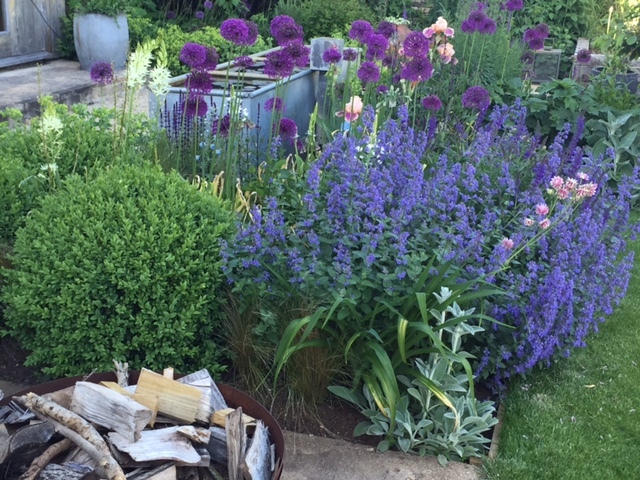Posted on May 08, 2020
Susan has been working from her Cotswolds' landscape design practice since 2008; working with clients locally, nationally and internationally to create beautiful, award-winning gardens. For this week's journal post we have asked Susan to share some of her expert know-how - from planting tips to achieve a modern country garden look, to advice for planning a landscape re-design that truly works for your family and garden...
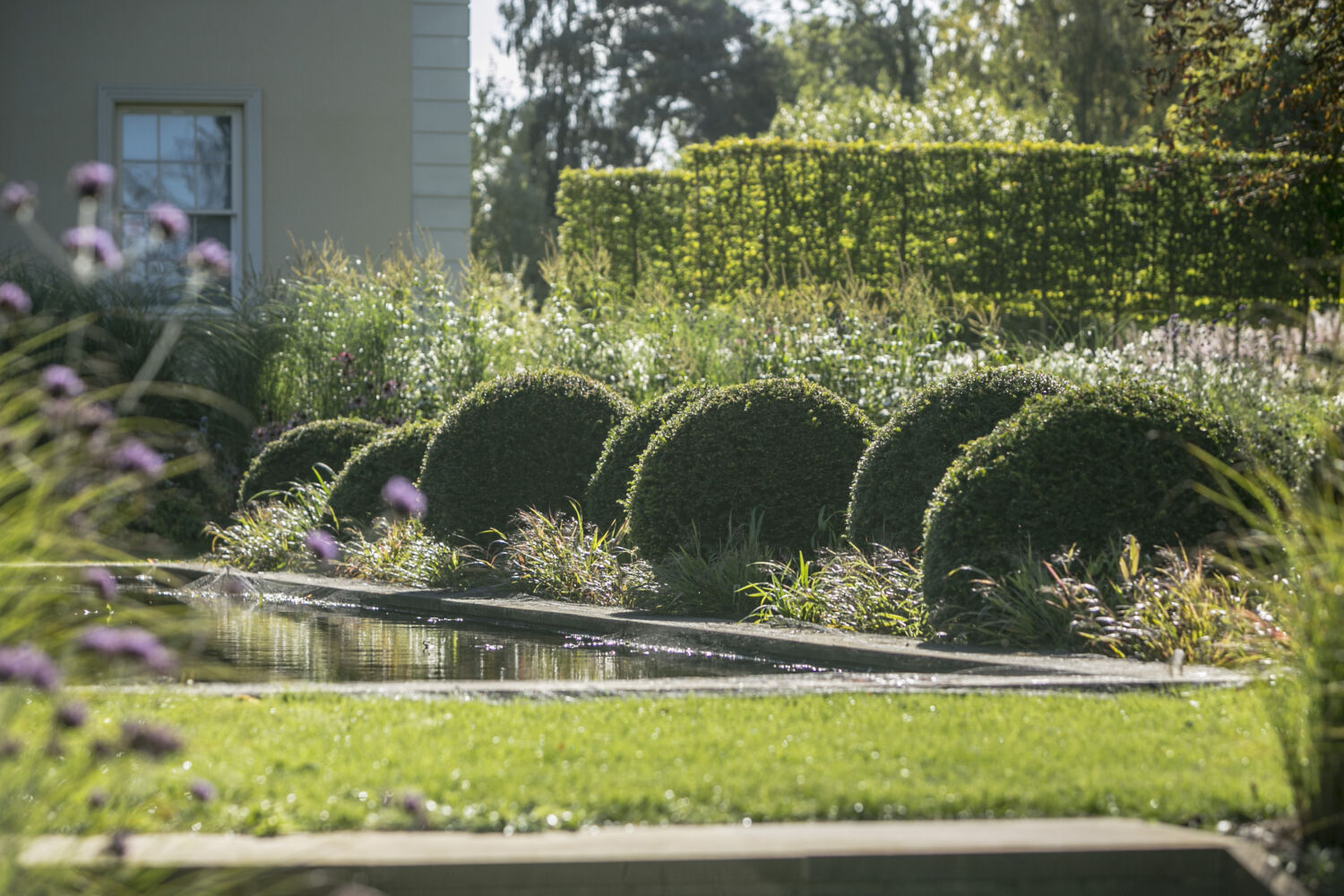
Tell us a little bit about the projects you work on...
We work on projects of all sizes from small town courtyards to large country estates. Our designs are recognised for their clean, architectural lines, rich planting and elegant styling. Intelligent design is the focus: commissions are thoughtfully planned, using traditional materials to sit harmoniously in contemporary settings. Each project is unique not only bringing up to date the classic Cotswold country garden but also creating a fresh take on London mews courtyards, clever terracing and zoning in executive developments and introducing sculpture and water focal points into gardens of all sizes.
Recognising the power of gardens to heal, and how they were once used to restore the sick back to health, our design expertise lets us work with community groups, hospitals and treatment centres to create elegant and peaceful settings to aid people’s mental and physical recovery.
What tips would you give to a new home-owner when it comes to inheriting a garden?
A new garden is a time of discovery and excitement as new plants emerge throughout the year, season by season beginning with the early bulbs. As beautiful as this planting may be, most importantly the layout of the garden must be looked at.
Begin with the ‘route of flow’ around the space. Map the sun, and how it impacts your garden, this will tell you the best place for a morning coffee, an outdoor lunch and an evening glass of wine catching the last of the sundowner rays.
Check the practicality of your pathways, do they link all your spaces together especially areas that you need to access on muddy winter days.
Keep looking at the garden in each season, assess the structure and colour and make notes of what you would still like to improve when the time is right.
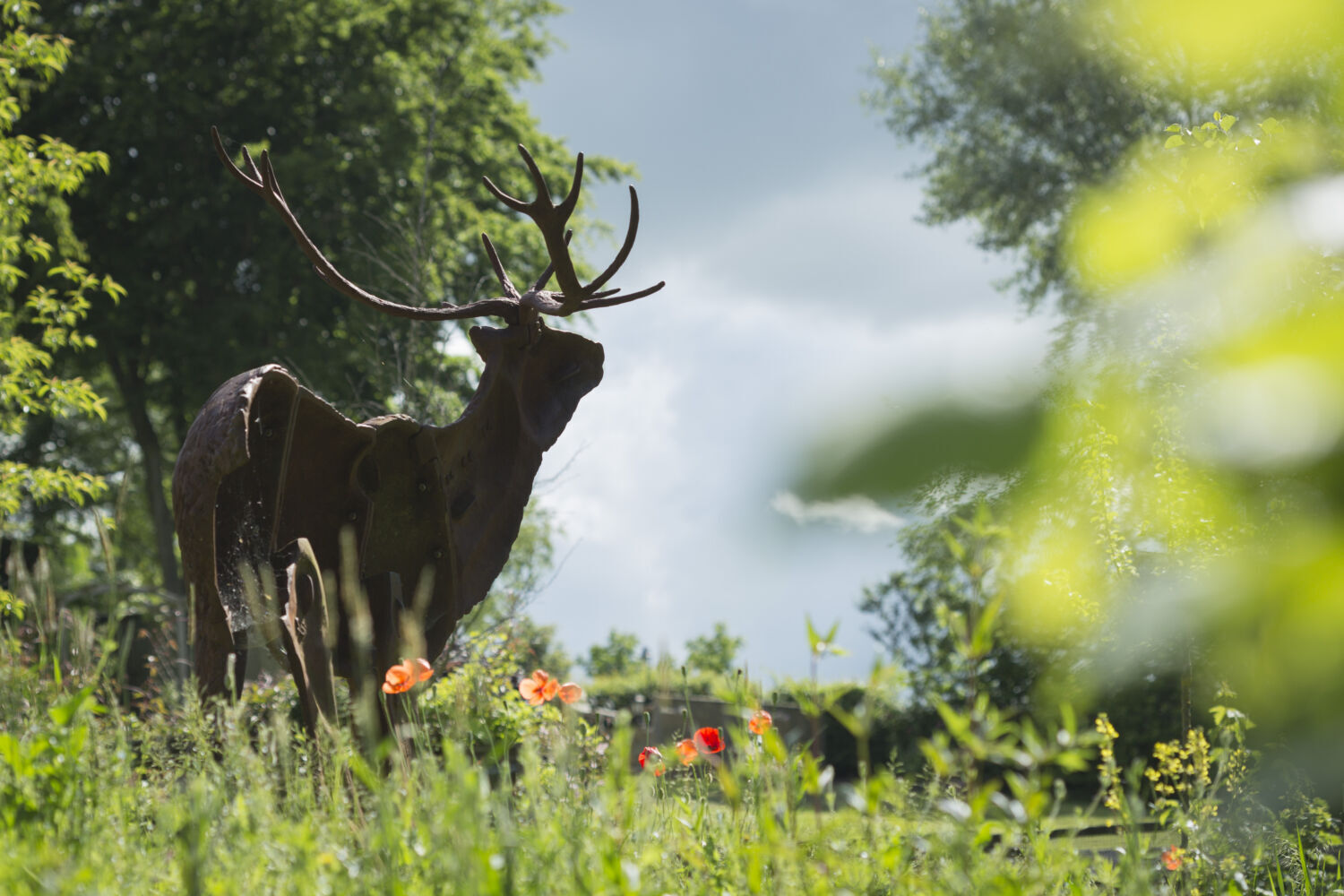
Can you explain the Garden Design process for us?
I always meet my clients on site, to talk through any requirements and look at the feasibility of ideas after which I will give them a proposal of design works for the garden. The project is then broken down into the following phases:
Stage 1 — The survey is the first step, taking measurements and levels to analyse the site along with a series of photographs. A concept design is then produced along with a 3D model and a moodboard.
Stage 2 — Detailed drawings can then be produced with technical details which includes dimensions, ground levels and drainage, construction drawings, lighting schemes and irrigation plans.
Stage 3 — Planting plans are then prepared; soil samples taken and the site assessed for sun or shade.
Stage 4 — The garden is then built by the landscapers. Plants are sourced from the specialist growers and importers and planted to complete the garden.
What should people consider first when thinking about redesigning their garden?
The first thing to do is ask yourself a series of questions to understand what you want to get out of your new garden:
Do you want to entertain family and friends?
Do you have a family and want to play football on the lawn?
Do you love growing vegetables?
What planting styles and colours do you love?
Do you plan on having any gardening help?
Budget – how much do you want to spend on landscaping?
This helps you work out what needs to be included, then collate any images and photos you have seen of these elements.
Remember that your garden adds value to your house and will also help to sell it in the future.
What trends have you seen in recent years with garden design? What new materials are people using, or how are we using our gardens differently to 5-10 years ago?
Gardens are becoming more important as an extension of the house, often with the social elements of cooking, eating and socialising. Entertaining areas with outdoor kitchens with BBQ and pizza ovens are a top requirement. Being in an outdoor space is proven to make people feel happier, while the physical and mental effects of gardening are well documented. Productive gardens are still very much at the forefront of current trends with fruit, vegetables and the flowers of a cutting garden.
What do you find most rewarding about Garden Design?
Creating something beautiful that makes people happy.
How can you create a contemporary take on a quintessential country garden?
With many Cotswold houses now having contemporary extensions or large glass doors to create a seamless view in to the garden, now is a time where materials and shape need to be used to link together the indoors and outdoors.
Furniture chosen for the contemporary interior design needs to be reflected in the exterior scheme, either matching or co-ordinating.
Stone can be laid in a more contemporary pattern, using clean sawn sandstone instead of riven stone, while in planting a more contemporary look can be achieved using a more naturalistic planting schedule with ornamental grasses, combined with the traditional cottage planting perennials.
A swap of traditional shapes for more contemporary lines can be used in a pergola giving instant structure, but grown with traditional rambling roses to soften the structure.
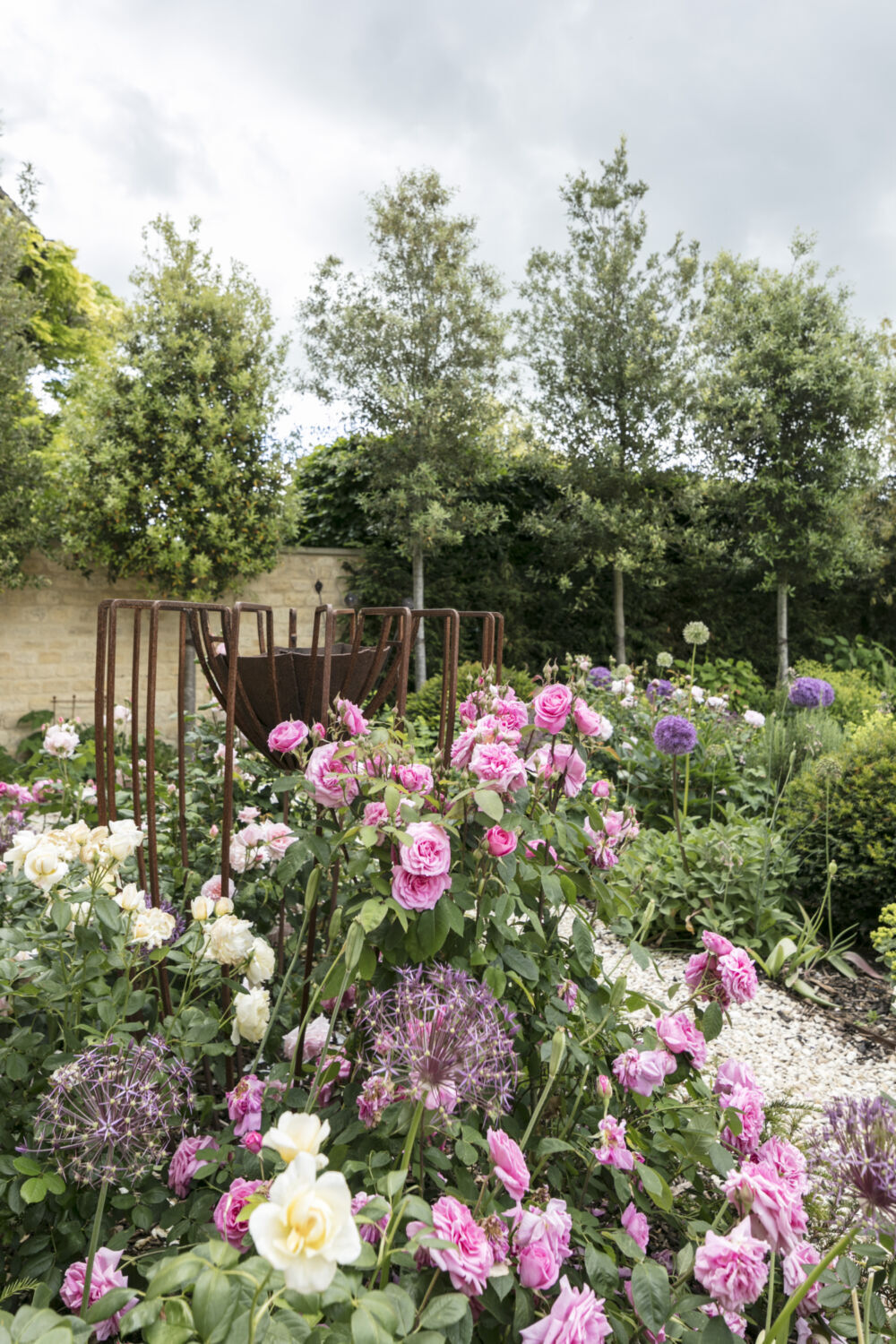
What is your favourite season in your own garden?
At the moment, the only thing in my garden is a huge pot filled with Agapanthus africanus, as I moved house recently and work on my new garden is about to start this month.
My favourite plant is the rose, so I will be filling my beds with some beautifully scented varieties in shades of subtle shades of pink, traditionally peaking in early summer along with peonies and foxgloves.
The planting scheme for my garden should make each season interesting with different plants in flower each month, and bulbs to extend these seasons. While in winter, I still want to look out and see something to enjoy, so I have a new water feature and some structural evergreen shaped shrubs.
How can people work with awkward gardens to turn them to their advantage?
Garden design is all about solving problems: the most common issues are steeply sloping sites and north-facing gardens. The key to success is to work with the site you have and design to enhance that.
In a north-facing site, the lack of sun is the key issue. If you have any area of sunlight in the garden then use for sitting areas, even if it is just for a few hours of the day. Choose plants that love the shade – beautiful fern gardens are perfect for this with so many varieties to choose from.
Sloping gardens need more technical work, and normally incorporate terracing with walls positioned to retain soil. Here the different levels and heights create interest within the garden, so don’t try and level the whole area as removing or adding soil is expensive.
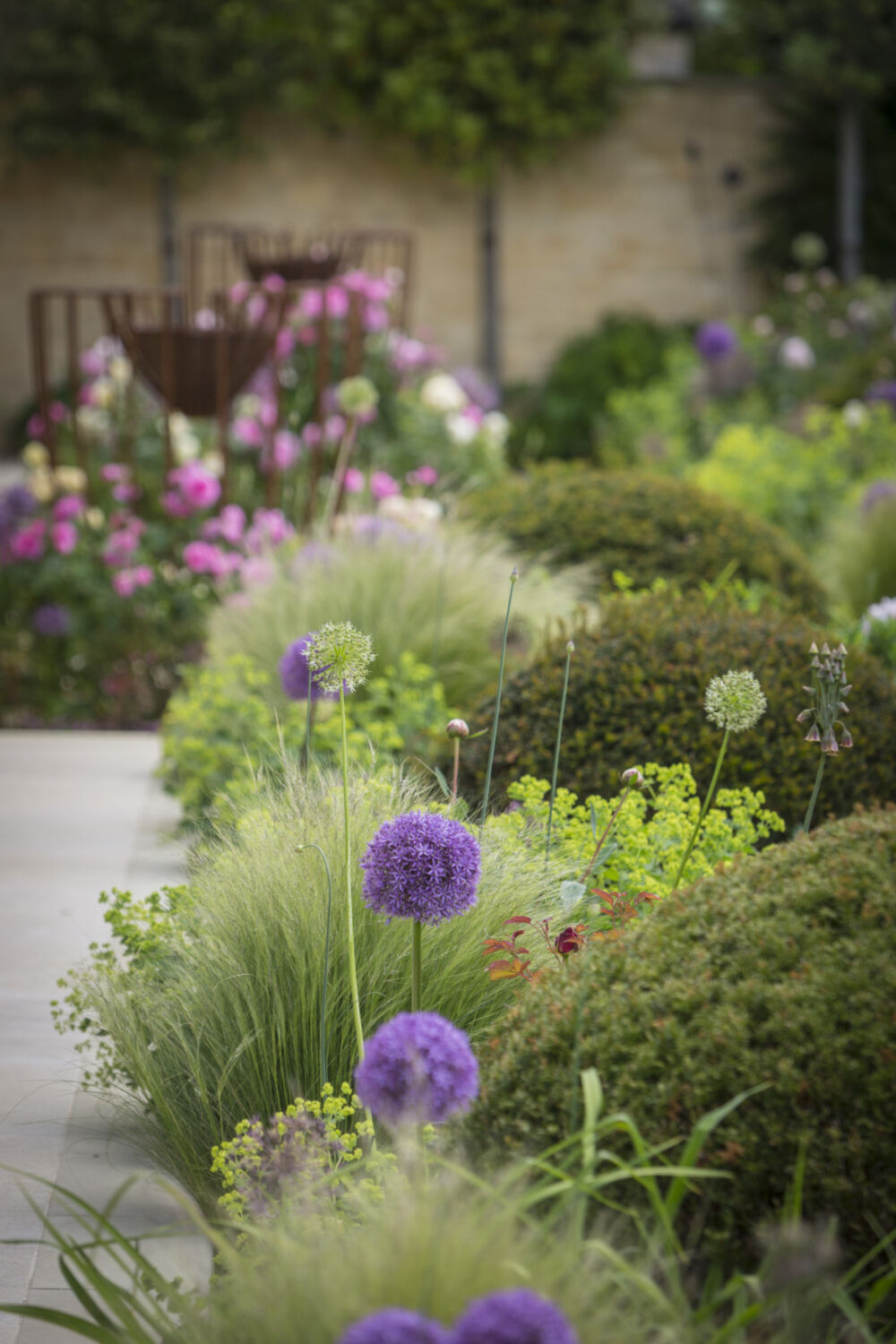
What tips can you share for creating a beautiful, yet low-maintenance garden?
My most asked for request is a low-maintenance garden, here are some planting tips:
Choose a strong structure of evergreen hedges and shrubs
Add in some flowering shrubs for colour interest
Grasses add good structure requiring little maintenance
Avoid too many perennials particularly those that need staking
Finally add a mulch to surpress the weed growth
Where do you find your inspiration?
Through Art and simply by being in nature.
Which materials (or plants) do you love working with most?
I try to work with reclaimed materials where possible using reclaimed York stone and other hard landscaping materials previously used on sites. Old planters and sculpture can add character to a new site giving impact. I have a love for using wood, natural and sustainable – sourced from and cut by local timber yards.
www.susandunstall.com
Pics credit: Charlie Birchmore Photography www.birchmore.co.uk
